Have you ever heard of geotagging? No? Then you are missing out a lot in your SEO. Geotagging is a powerful tool that can significantly boost your website’s local visibility. In today’s digital age, where nearly everything is accessible online, optimising your online presence for local search is essential.
Geotagging, often overlooked, can play a crucial role in enhancing your website’s local SEO performance.
As SEO experts in Melbourne, here are some useful insights about geotagging. Let’s take a look at its benefits and how it can help improve your website’s local visibility
What is Geotagging?
Geotagging is the practice of adding geographic information, such as latitude and longitude coordinates, to various forms of digital content, including photos, videos, and text. This geographical metadata provides location-specific details about where the content was created or captured.
It serves a variety of purposes, from helping users organise and search for their content based on location to enhancing local search engine optimisation (SEO) efforts for businesses.
Geotagging plays a crucial role in mapping, navigation, and geospatial analysis, making it a versatile tool in the digital age.
Metadata Geotagging – Enhancing Local Relevance
Metadata geotagging involves adding geographical information to the metadata of your website. This includes information like your location, address, and relevant keywords associated with your business.
Search engines use this metadata to understand the local relevance of your content. When users search for businesses or services in a specific area, geotagged metadata can help your website appear in relevant local search results.
Htags for Local Emphasis
Htags, or header tags, are crucial for structuring your website’s content. Geotagging can be applied to Htags by incorporating location-based keywords in your headers and subheaders.
This not only helps search engines identify the local focus of your content but also makes it more user-friendly. When users browse your website, they can quickly grasp the geographical relevance of your products or services.
Content Geotagging – Localising Your Message
Incorporating geotagged content on your website is another effective strategy. Write blog posts, articles, or landing pages that cater to the interests and needs of your local audience.
Use location-specific keywords and references to establish a strong local connection. By providing valuable and geographically relevant content, you can attract local visitors and keep them engaged, ultimately boosting your local visibility.
URL Geotagging – Structuring for Local SEO
Optimising your website’s URL structure for local SEO is essential. Geotagging can be applied here by incorporating location-based keywords into your URLs.
For instance, if you operate a bakery in Melbourne, your URL could include “/melbourne-baker/” Such URLs not only improve your local SEO but also make it easier for users to understand your website’s focus and location.
Geotagged Images
Images play a significant role in user engagement and can also impact your local SEO efforts. When you upload images to your website, ensure that they are geotagged with location information.
This is particularly important for businesses with physical locations, as it helps users associate your images with a specific place. Additionally, uploading geotagged images to your Google My Business (GMB) profile can have a direct impact on your local map ranking.
Why Geotagged Images Matter
In the digital landscape, visual content is a driving force behind user engagement. When customers search for a local business on Google, they often rely on the images they find in the GMB gallery to gauge the establishment’s appearance, atmosphere, and offerings.
Geotagged images take this a step further by embedding location data directly into the image file. This metadata contains information such as latitude and longitude coordinates, providing specific geographic context.
GMB Profile Optimisation – The Geotagging Connection
Google My Business (GMB) is a powerful tool for local businesses to enhance their online visibility. Uploading geotagged images to your GMB profile not only adds authenticity to your business but also helps Google understand your location better.
When potential customers search for businesses in your area, having a well-optimised GMB profile with geotagged images can boost your chances of appearing in local map results.
Geotagging is an invaluable asset for improving your website’s local visibility in SEO. Whether it’s through metadata, hashtags, content, URL structure, or geotagged images on your GMB profile, each aspect contributes to a stronger local presence. By leveraging geotagging effectively, you can connect with your local audience, increase your website’s relevance in local searches, and ultimately drive more local traffic to your business.
Don’t miss out on the opportunities that geotagging offers to enhance your website’s local SEO performance and connect with your local community.
Hand Picked Articles















